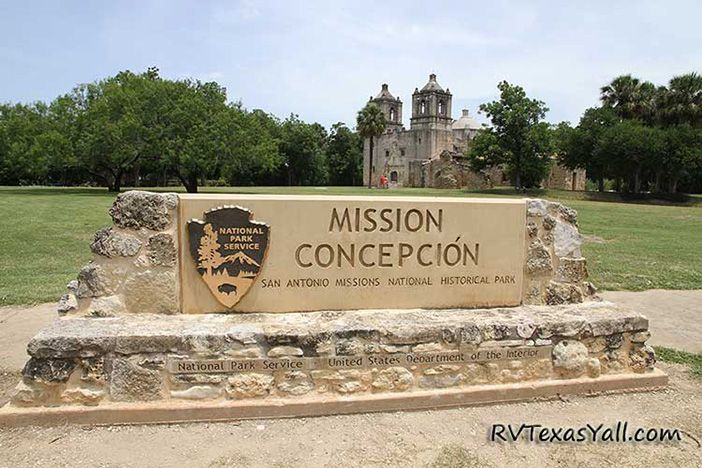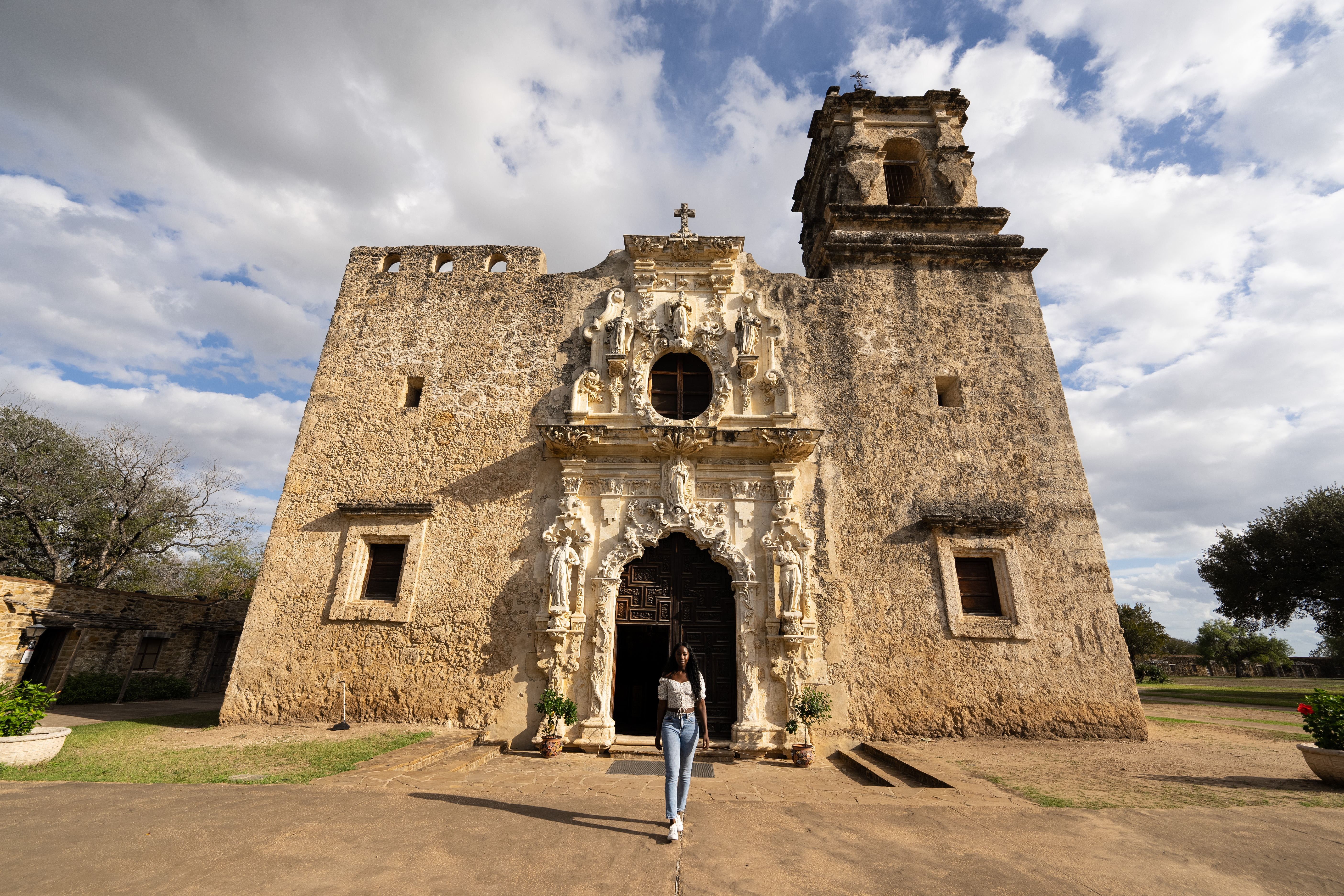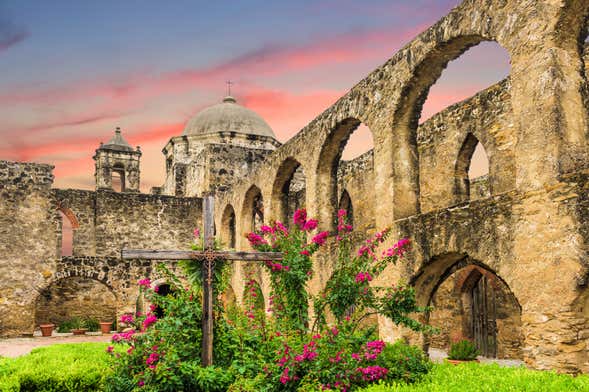Parking Made Easy: Your Guide to San Antonio Missions National Historical Park Parking
Parking Made Easy: Your Guide to San Antonio Missions National Historical Park Parking
Blog Article
Reveal the Social Treasures of Texas at the San Antonio Missions National Historic Park
Entering the San Antonio Missions National Historic Park is like going into a site to a bygone period, where the rich tapestry of Texas history unfolds in the middle of the old rock wall surfaces and serene yards. The objectives, deeply rooted in both Spanish and Indigenous cultures, stand as testimony to a time when faith, tradition, and neighborhood linked to shape the landscape we see today. Each goal tells a distinct story, providing a peek into the past that is both exciting and provocative. As visitors stray with these hallowed premises, they make certain to uncover a treasure of social relevance waiting to be explored.
History of San Antonio Missions
The origins of the San Antonio Missions can be traced back to the 18th century when Spanish promoters established these spiritual stations in Texas. These missions were constructed with the purpose of spreading out Christianity and transforming the native populace to Catholicism. The initial goal, Goal San Antonio de Padua, was founded in 1718, complied with by Objective San Jose in 1720, Goal San Juan Capistrano in 1731, and Objective San Francisco de la Espada in 1731. These missions were not just locations of praise yet likewise offered as facilities for farming, market, and education and learning, playing a substantial role in the growth of the region. In time, the missions ended up being flourishing neighborhoods with churches, living quarters, workshops, and farmland.
Regardless of facing difficulties such as condition, conflicts with Native American tribes, and political adjustments, the goals remained to operate for numerous years. Today, the San Antonio Goals stand as a testament to the abundant cultural heritage of Texas and give a glimpse right into the history of Spanish emigration in the area.
Building Marvels of the Objectives

Each objective within the San Antonio Missions National Historical Park boasts distinct building characteristics. The Objective San José, referred to as the "Queen of the Goals," thrills visitors with its grand church decorated with intricate carvings and a striking increased window. In contrast, the Objective San Juan Capistrano showcases a less complex layout with its small belfry and modest yet stylish chapel.
The architectural wonders of the objectives not just offer as historic spots yet additionally as living testaments to the social combination that specifies Texas' abundant heritage - San Antonio Missions National Historical Park map. Visitors can discover these structures, marvel at their intricate information, and acquire a much deeper appreciation for the craftsmanship and virtuosity of the past
Social Significance of Objective Concepcion
With its unique red rock walls and complex geometric designs, Goal Concepcion stands as a testimony to the withstanding cultural legacy of the San Antonio Missions National Historic Park. Constructed in the early 18th century, Mission Concepcion is renowned for its well-preserved frescoes, which depict a mix of Spanish, Indigenous American, and Mesoamerican influences. These dynamic frescoes not just display the artistic skills of the people who produced them however likewise act as a graph of the cultural blend that took place within the mission walls.
Beyond its architectural charm, Mission Concepcion holds considerable social importance as a site where aboriginal peoples were introduced to European customizeds and Catholicism. The goal played a critical role in shaping the cultural landscape of Texas, functioning as a center for spiritual, social, and financial tasks. Today, Objective Concepcion continues to be a location of social value, attracting site visitors from around the look at this web-site globe who seek to explore and appreciate its rich background and architectural marvels.
Native Influence on Mission Life

Evident with the everyday communications and cultural exchanges within Goal Concepcion, indigenous influences played an essential function in shaping the material of objective life in the 18th century. Native communities brought a wealth of knowledge and abilities that considerably influenced numerous aspects of objective life. Their competence in agriculture, craftsmanship, and traditional recovery techniques not only maintained the missions yet additionally enriched the social landscape within the mission wall surfaces.
Indigenous impact extended past functional skills, permeating into spiritual practices and creative expressions. Indigenous ideas and customs come together with Catholic teachings, leading to a distinct syncretic mix that defined the spiritual life of the objectives. Aboriginal artisans additionally left an enduring mark on the missions through their intricate workmanship, evident in the detailed makings and lively frescoes that adorn the mission churches.
Conservation Initiatives and Future Plans
The integration of indigenous impacts within the fabric of mission life at San Antonio Missions National Historical Park has actually stimulated detailed conservation initiatives and strategic future strategies focused on safeguarding and improving the cultural prizes housed within these historical websites. Conservation initiatives at the park are complex, consisting of conservation of the architectural frameworks, security of the surrounding natural surroundings, and documentation of the rich cultural heritage embedded in the missions. Through collaborations with local communities, federal government companies, and cultural organizations, the park has actually implemented conservation jobs to attend to issues such as erosion, architectural stability, and historical interpretation.
Looking ahead, the San Antonio Missions National Historical Park has enthusiastic future strategies to more amplify its social importance. These strategies involve broadening curricula, boosting site visitor experiences with interactive exhibits and trips, and promoting ongoing study to deepen understanding of the objectives' historic context. By prioritizing conservation and technology, the park intends to make certain that these social prizes remain easily accessible and purposeful for generations to find.

Final Thought
The objectives, specifically Goal Concepcion, reflect the impact of aboriginal populations on goal life. The park stands as a testimony to the enduring heritage of the objectives in Texas. San Antonio Missions National Historical Park hour.
Please visit one of our local supporters - Https://www.quickliquidationsales.com/shop
Report this page